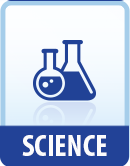|
This section contains 236 words (approx. 1 page at 300 words per page) |
The propyl group is a functional group derived from propane (C3H8) by the removal of a hydrogen atom. It has the chemical formula C3H7-. The propyl group exists in two distinct isomeric forms. The first is normal propyl (n propyl or 1 propyl) which has the chemical formula CH3CH2CH2-. The second is isopropyl (2 propyl) which has the formula (CH3)2CH-. Like all isomers the properties of the two propyl forms are slightly different. For example, propan-1-ol has a boiling point of 206°F(96.6°C), whereas propan-2-ol has a boiling point of 180°F(82°C). In this example, the first molecule is a primary alcohol and the second is a secondary alcohol. Each has slightly different chemical as well as physical properties.
In common with other alkyl groups, both forms of the propyl group modify the behavior of a functional group. As molecular mass increases, for example, the boiling point of a liquid will also increase. As can be seen in the previous example, the arrangement of the propyl group can also have an effect. This is due to the fact that with propan-2-ol the hydroxyl group of the alcohol is protected and consequently unavailable for hydrogen bonding. As a result, there are less intermolecular forces to overcome so less energy has to be added to the system to overcome these internal forces.
|
This section contains 236 words (approx. 1 page at 300 words per page) |


